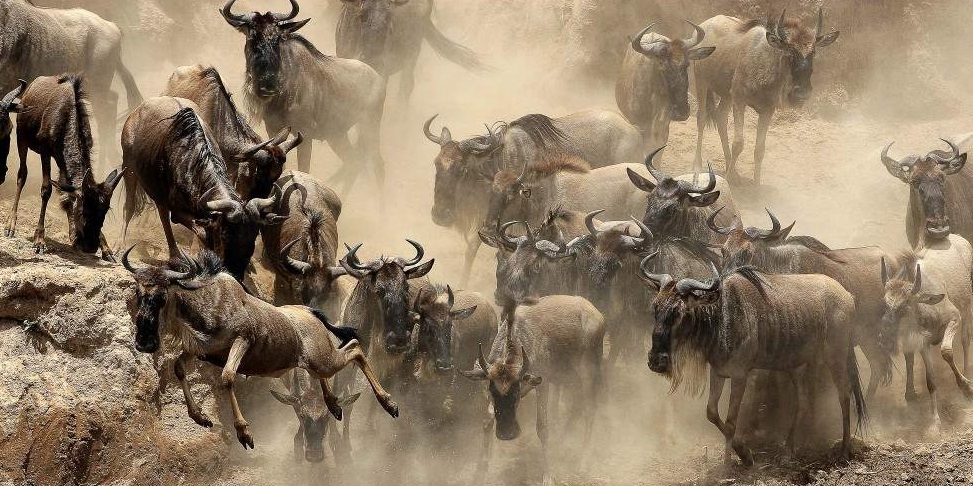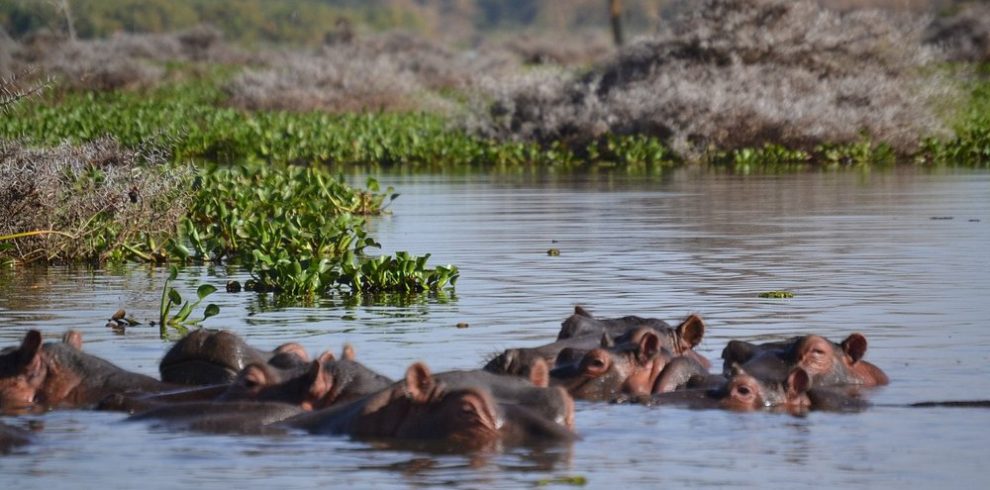The African Fish Eagle, scientifically named Haliaeetus vocifer, is among the magnificent and great birds of prey native to Africa. The large and noisy with an incredibly loud sound, it has become an emblem not only of bird watchers and nature lovers but also of residents of the area. This large bird mainly inhabits the areas close to the water bodies where it hunts and feeds. It is associated with courage and prowess and is an important cultural item in many African communities.
Discover interesting facts about the African Fish Eagle, Africa’s iconic raptor known for its powerful call, impressive hunting skills, and striking appearance across lakes and rivers. In the current piece, we will look at the following 5 interesting facts about the African Fish Eagle:
1. The African Fish Eagle Has a Unique, Iconic Call
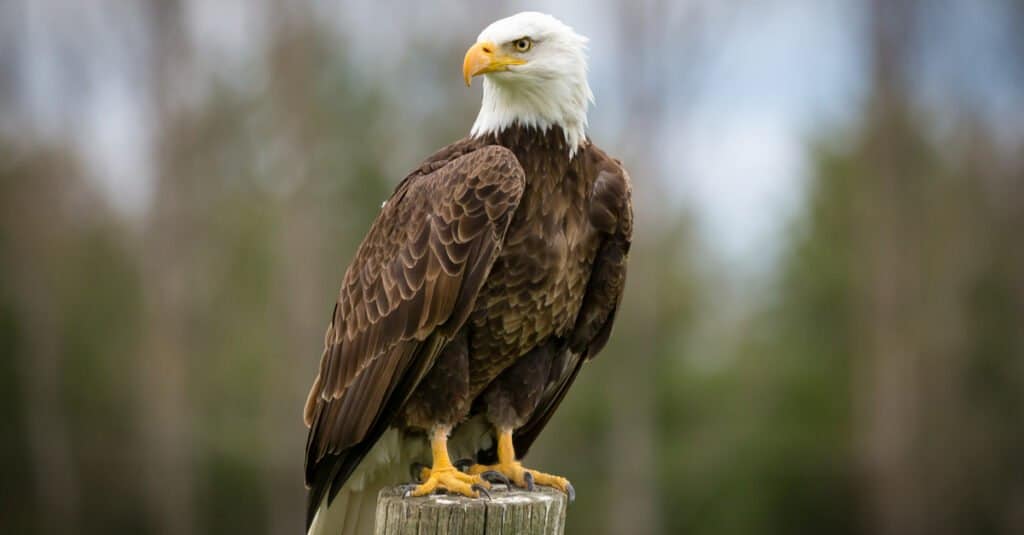
It is famous for its exciting and terrifying shrieking call that gives people the feeling of being in the actual African jungle. The call of this particular bird is a trills, or a high-pitched, yelp-like sound which can be heard ringing through the air for long distances. The African Fish Eagle is perhaps one of the most well-known birds and its call is frequently used, even in programs and movies that give an indication of the wild savannahs of Africa even if the bird is not depicted in the content.
- The Call’s Significance
From the call, one can deduce several functions in the life of an African Fish Eagle. It is used for territory defence, mostly during the breeding period when both sexes are establishing a territory for nesting. It also enables pairs to coordinate with each other to indicate a position or plan to other members of the call. Also, it helps to prevent birds or any other animals outside the nest to come close to it, because they can see that there is a rival or a predator nearby.
- Symbolism and Cultural Importance
The call of the African Fish Eagle has not only been used for hunting purposes but also forms part of the common culture in Africa. The bird itself has a certain significance in the culture and myths of many African tribes. In some African cultures, traditional beliefs associate Fish Eagle with power, courage and freedom. Its call, heard throughout the waters of the continent, is seen not only as an object that links the material and the spiritual worlds.
2. The African Fish Eagle Is a Master of Fishing
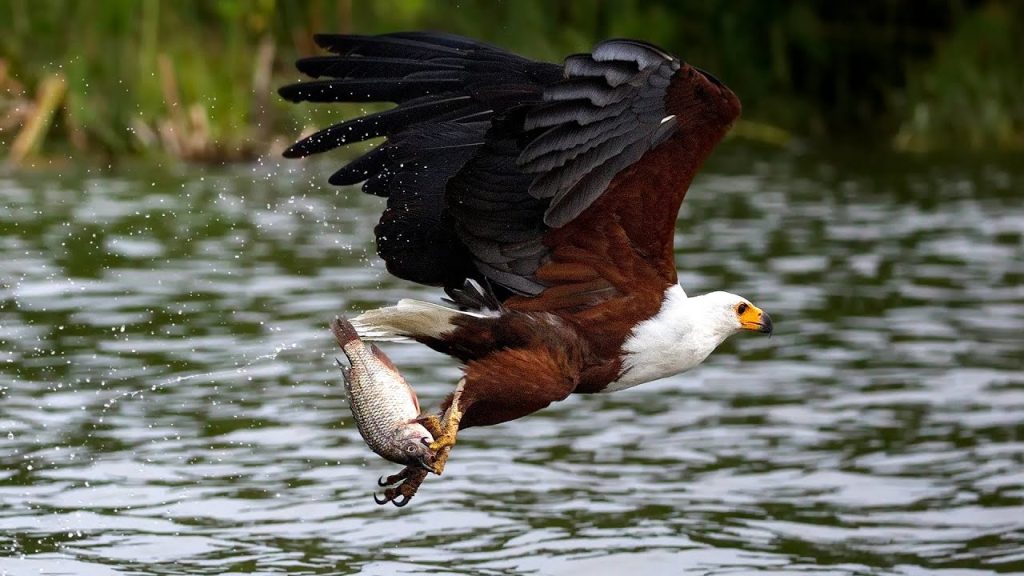
This bird is aptly named the African Fish Eagle because it mostly feeds on fish, and the bird has adapted to specialize in water-body hunting. The shape of its beak and its claws are a reflection of its predatory abilities but the most significant aspect of this bird is when it comes to the issue of fishing for its prey since the bird is one of the most skillful when it comes to this task.
- Adaptations for Fishing
Physical characteristics of the African Fish Eagle adapting them for a life close to water source include. It’s also provided with strong curved claws for gripping slippery fish. It also has a hooked beak designed in such a way that it will be effective in ripping through the flesh of the prey it catches. Another great facts about the African Fish Eagle, is its vision: the Fish Eagle can easily locate fish swimming in the water from a distance, often from the branches of tall trees adjacent to the rivers or along the shores of the lakes.
- Hunting Technique
African Fish Eagle is one of the most accomplished hunters and the hunting methodology is really awesome and effective. They feed on fish that they can catch from the water after perching over the water on trees or any other high point over water bodies such as lakes or rivers. When it finds a fish, the Fish Eagle swoops majestically towards the water body and catch the prey using it’s powerful claws. These birds are specific bird hunters and have the ability to adjust their flight and dive as they hunt depending on the movements of the prey they have sighted.
This bird of prey can feed on most fish, be it fingerlings and other small fish for the small Fish Eagle or relatively bigger fish for the larger Fish Eagle in accordance to the availability of food. But its prefers mainly to feed on mid-sized fish like the tilapia or the catfish which is found in abundance in sub-Sahara region.
- Fishing in Competition
It is difficult to understand how the African Fish Eagle can hunt and fish so efficiently and assertively to make it a superior predator in its habitat but he has competition. Other birds of prey which the African Fish Eagle shares its environment with include the osprey and large raptors; these birds also feed on fish. As a result, to minimize direct competition, these birds hunt at different hours of the day or even in different parts of a water channel. Nevertheless, the flexibility and success in competing with other predators makes the African Fish Eagle continue being a dominant predator in its habitat.
3. The African Fish Eagle Has a Wide Range Across Africa
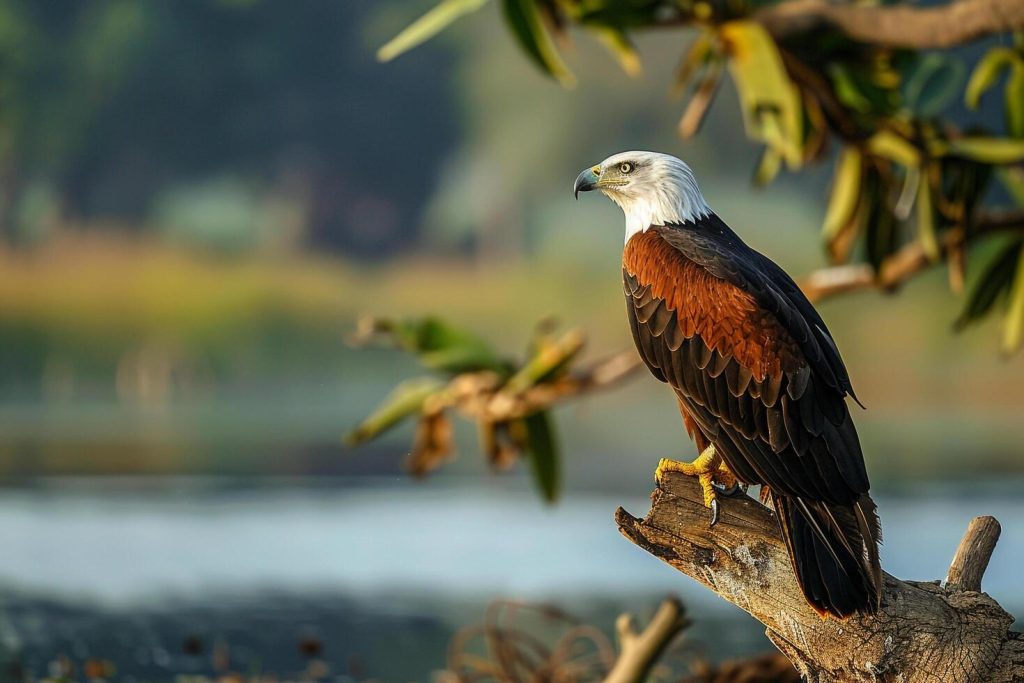
One more interesting fact about the diet of the African Fish Eagle is its geographical spread which encompasses most of the sub-Saharan region of Africa. This bird is widespread, they can be found in East Africa great lakes regions, West African coastal wetlands and so on. It is not restricted to certain areas in the world, but rather depends on the ecological conditions in which water is available.
- Habitats and Distribution
Due to its habitat, the African Fish Eagle is primarily accustomed to living in and near large water sources like lakes, rivers, and marshes. Such regions offer the adequate supplies of food required to support the dietary needs of the eagles. It is found in regions such as the Lake Victoria, Zambezi River, the Lake Malawi and other areas that harbor national parks in most African countries.
The African Fish Eagle is distributed right from the west part of Africa, down to eastern area, and even in southern African sub-region and some parts of the horn of Africa. It can be found in many habitats including tropical rainforests, savanahs, and deserts, as long as there is a constant availability of water.
- Migration Patterns
Contrary to many other birds species, the African Fish Eagle is a non-migratory species which does not fly large geographical distances seasonally. But there is sometimes migration among some of these animals according to the areas that have water and food resources. These ecosystems experience changes in water levels throughout the year, in such a case, the Fish Eagle may transfer from one region to another within its range in the search for better hunting grounds.
4. The African Fish Eagle Is a Monogamous and Loyal Mate
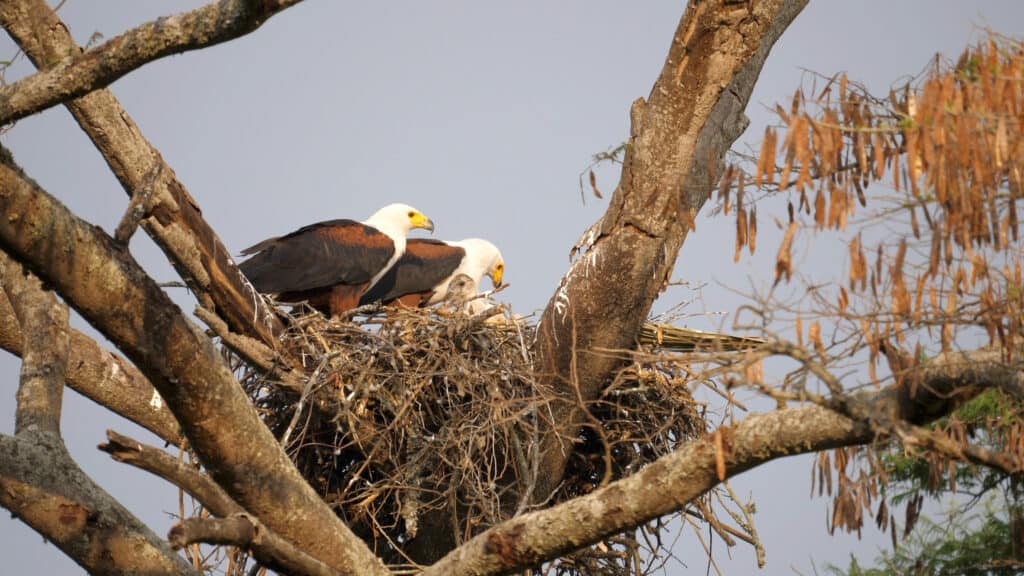
Interestingly, the African Fish Eagle is known to have long-term pair bonds with its partner. These eagles are known to be very loyal to their mate; the two will rarely change partners once they have formed a bond. This loyalty is most evident in the animal kingdom given that many species do not remain attached to a partner or have multiple partners at one go.
- Courtship and Nesting
In an aspect of courtship, the African Fish Eagle is known to fly around in circles and perform elaborate swoops and aerial stunts as a way of impressing the female. Once a pair has been formed, it constructs a huge nest that is located in trees that are tall along the water channel. They build their nests at about mid-canopy level in terms of height in the trees to enable the pair to have a good view of their surroundings.
These nests are mainly made of sticks, twigs and branches and contain a lining of softer materials like grass and leaves. As years go by, the nests increase in size because the two birds continue building upon what was done adding new feathers to the nest during successive breeding seasons. There are even some Fish Eagle nests that are so big and so heavy that it can be passed on from one generation to another in the context of many years.
- Raising the Young
African Fish Eagle lays it two eggs, but only one chick normally hatches and the young ones do not leave the nest until they are old enough. While incubation, both parents are involved, and after hatching, both are involved in feeding and guarding a young one. The young eagle is fed with raw meat, especially fish and small animals, and over time, it is taught how to fish by their parents. The chick will spend a few months in the nest before it fully develops and is capable of flying and going in search of its prey.
This close-knit relationship is vital for the success of the young since both the male and female play an important role in protecting the young.
5. The African fish Eagle facing many Conservation challenges

Although it is widely distributed and is one of the fiercest sharp hunters, the African Fish Eagle has numerous threats to its survival. Some of the challenges facing these species include; habitat degradation, water and air pollution, and problem between humans and wildlife who are natural enemies.
- Habitat Loss and Pollution
The major threat to the African Fish Eagle is habitat loss. As people expand too, and transform themselves into urban dwellers, setting up some common structures along the water sources, the natural living area of these birds is being threatened. In addition, activities such as constructing new dams, housing, and farming enterprises disturb and eliminate proper nesting and foraging grounds for the Fish Eagle. Further, pollution in water originating from industrial effluents, pesticides, and wastes affect fish which are the staple diet for this bird; such pollution often affects the health of the birds and their ability to reproduce.
- Human-Wildlife Conflict
In some regions the African Fish Eagle is also affected by human activities such as human wildlife conflict. Fishermen, for example, may consider the Fish Eagle as a rival since the bird is known to steal fish from nets or even catch it. In return, the fishermen may use catapults or other violence to chase the eagles away or even attack them. This together with the other factors has seen some local populations of the species reduce in numbers.
- Conservation Efforts
There are efforts being taken around the African Fish Eagle and its environment to ensure conservation is done. Most of the natural conservation establishments, including the national parks and wildlife reserves, support the survival of the above-mentioned species and efforts are ongoing to ensure that water pollution and pollution of other natural resources is contained. Furthermore there is the social awareness, which encompasses imparting knowledge to the local communities about the need to protect the African Fish Eagle and its natural habitat.
Conclusion
The African Fish Eagle is an awesome bird and is uniquely characterized by the ability to perfectly hunt, the unique calls they make and tight knit family system. They use their excellent eyesight for hunting which makes them interesting birds that continue to draw the attention of people all over the world. However, like other species in the wild, the African Fish Eagle’s existence is under jeopardy due to various factors. These are some facts about the African Fish Eagle; it is equally important to learn more about this bird and it features to stress on the need to protect this magnificent bird to continue to exist in the wilderness of Africa.

